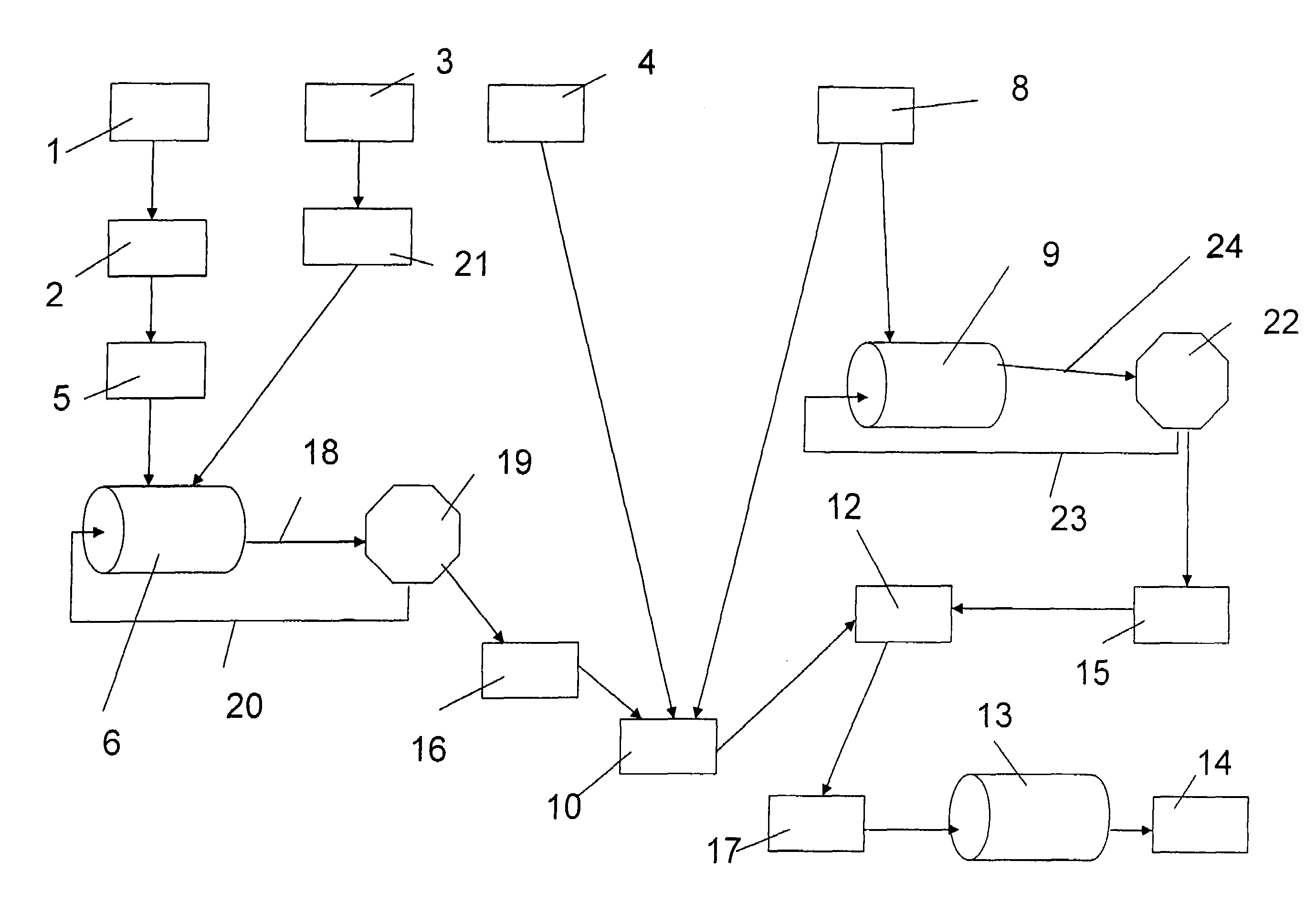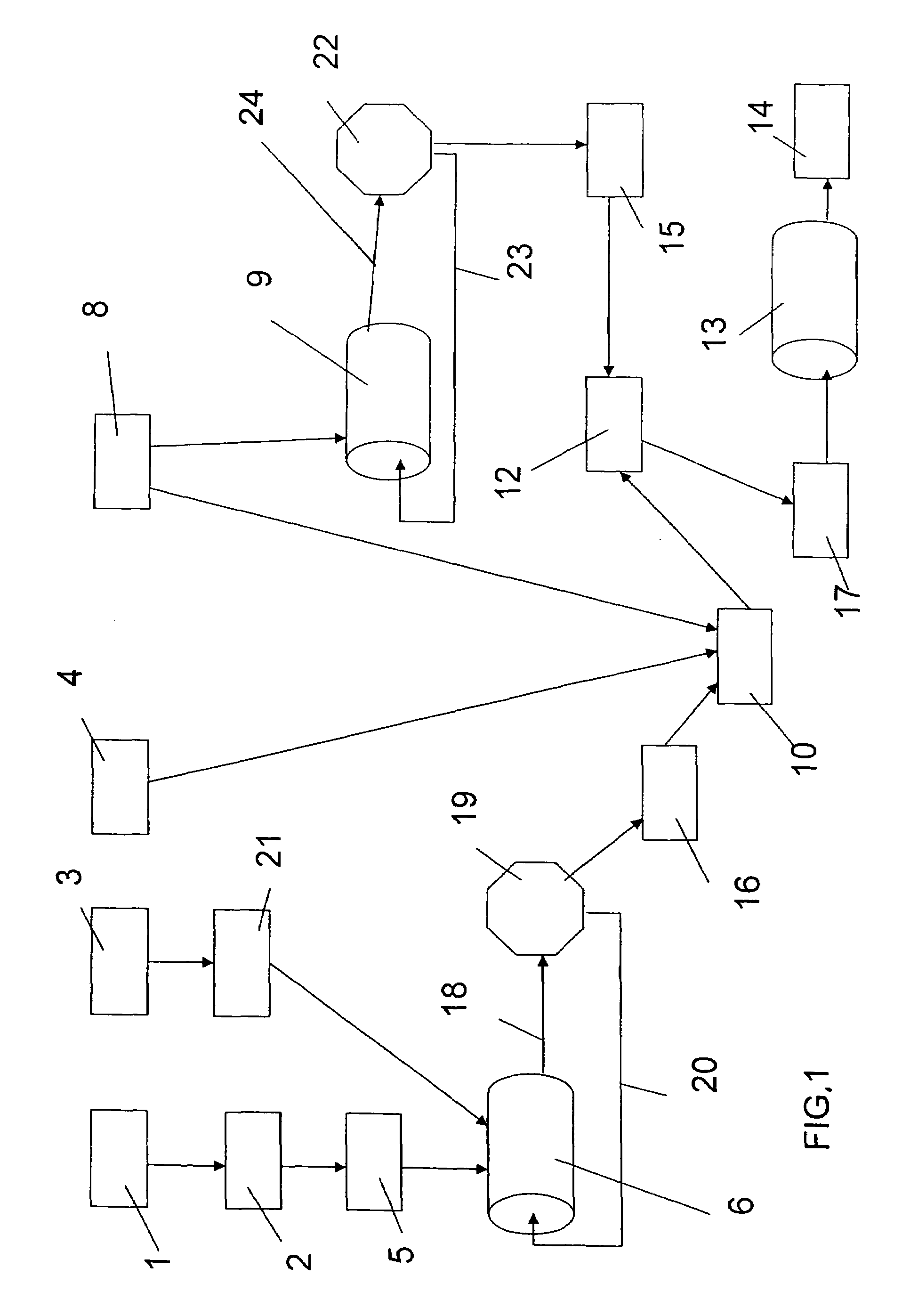Processing system for manufacturing composite cementitious materials with reduced carbon dioxide emissions
a technology of carbon dioxide emission and processing system, which is applied in the direction of solid waste management, sustainable waste treatment, grain treatment, etc., can solve the problems of not providing more than 20 to 25% of portland clinker replacement, significant negative influence on cement performance, and sharp increase in setting time. , to achieve the effect of reducing the content of portland clinker
- Summary
- Abstract
- Description
- Claims
- Application Information
AI Technical Summary
Benefits of technology
Problems solved by technology
Method used
Image
Examples
Embodiment Construction
[0014]In FIG. 1 the following reference numerals indicate the following apparatus: 1 denotes a feed station for a drying unit, 2 denotes a drying unit (a rotary dryer or a fluid bed dryer), 3 denotes a silo for slag and / or fly ash, 4 denotes a silo for additives, 5 denotes a intermediate silo for dried sand, 6 denotes a milling unit for pregrinding of quartz sand, 19 denotes an air classifier with cyclone and dust collector, 8 denotes a silo for Portland cement, 9 denotes a milling unit for pre-grinding of a part of the Portland cement before mixing with other components before processing, 10 denotes an intermediate silo for an unground portion of the Portland cement and preground sand, slag, and additives, 22 denotes an air classifier with cyclone and dust collector, 12 denotes a rotary mixer, 13 denotes vibrating mills for processing of raw material feed (installed in parallel or in series), 14 denotes a silo for the final blended cement product, 15 denotes an intermediate silo fo...
PUM
| Property | Measurement | Unit |
|---|---|---|
| particle size | aaaaa | aaaaa |
| particle size | aaaaa | aaaaa |
| setting time | aaaaa | aaaaa |
Abstract
Description
Claims
Application Information
 Login to View More
Login to View More - R&D
- Intellectual Property
- Life Sciences
- Materials
- Tech Scout
- Unparalleled Data Quality
- Higher Quality Content
- 60% Fewer Hallucinations
Browse by: Latest US Patents, China's latest patents, Technical Efficacy Thesaurus, Application Domain, Technology Topic, Popular Technical Reports.
© 2025 PatSnap. All rights reserved.Legal|Privacy policy|Modern Slavery Act Transparency Statement|Sitemap|About US| Contact US: help@patsnap.com


